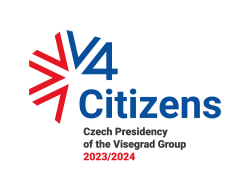
| Thu | Fri | Sat | Sun | Mon |
|---|---|---|---|---|
| 5 | 8 | 14 | 18 | 22 |
| Thu | Fri | Sat | Sun | Mon |
|---|---|---|---|---|
| 11 | 18 | 19 | 21 | 22 |
| Thu | Fri | Sat | Sun | Mon |
|---|---|---|---|---|
| 11 | 16 | 18 | 20 | 20 |
| Thu | Fri | Sat | Sun | Mon |
|---|---|---|---|---|
| 11 | 17 | 17 | 20 | 23 |
‘Flexible solidarity’
Intergovernmentalism or differentiated integration: the way out of the current impasse
Visegrad Insight in partnership with Eastern Europe Network of Fellows of the Konrad Adenauer Foundation is pleased to present articles by Jörg Winterbauer, Zsuzsanna Végh and Vít Dostál created on the occasion of ‘Germany and the Visegrad States: Potentials and Challenges of Cooperation’ conference in Warsaw, 25-27 November 2016.
The refugee and migration crisis has created stark dividing lines adding to the pre-existent centrifugal forces already active across the EU. While divisions are nothing new, this is the first instance since their accession that the countries of the Visegrad Group – the Czech Republic, Hungary, Poland and Slovakia – have found themselves in such severe, direct confrontation with several so-called old member states, among them their long-standing point of reference, Germany.
The differences culminated around the quota system, the relocation of 160,000 asylum-seekers among the EU member states and the Commission’s proposal in May 2016 suggesting an automatic relocation mechanism for emergency situations. The decision about the relocation of 160,000 was passed in September 2015 against the opposition of the Czech Republic, Hungary and Slovakia; however, since the vote was under qualified majority, it is binding to all member states. Regardless, Hungary and Slovakia explicitly refused to implement it and attacked the decision at the European Court of Justice.
The impasse that unfolded around the quota has been felt through multiple facets and is illustrative of the complexity of the crisis the EU is facing currently. Not only that there is disagreement on the desired policy goals and outcomes concerning migration, but the EU member states are not on the same page concerning the decision-making processes on the issue, and their take differs even on one of the key principles underpinning the EU as a community, that is, solidarity.
Could, however, the proposal of applying ‘flexible solidarity’ put forward by the Visegrad countries at the Bratislava Summit in September 2016 be a way out from the current standstill?
Solidarity, although nowhere clearly defined in the Lisbon Treaty, should stand as an expression that a given community belongs together and should entail support for one another whenever needed. Within the community, solidarity should not be based on conditions and should be mutual, that is, in an ideal case. Of course, several instances can be cited even from the recent history of the EU when the principle of solidarity was overlooked, but precedent cannot stand as an excuse for the V4 to disregard its obligations and commitments laid out in the treaty.
Given the backdrop of the Visegrad countries’ loud and often xenophobic rhetoric concerning the refugee and migration crisis over the past year, it is no wonder that the proposal of ‘flexible solidarity’ was widely understood as meaningless political PR at best, and as Visegradian for no solidarity at worst. Thanks to the actions of the V4 countries – even if not all of them identifies with the approach to an equal degree – the Visegrad brand as such got tainted in the EU and trust has been broken among the member states. Nevertheless, giving the benefit of the doubt to the Slovak Presidency of the European Council, who put forth the proposal of ‘flexible solidarity’, it is worth examining the notion closer.
The Joint Statement of Heads of Governments of the V4 Countries published on September 16, 2016, in Bratislava, states that a migration policy based on ‘flexible solidarity’ would enable member states to decide on specific forms of contribution taking into account their experience and potential. Additionally, it notes that any distribution mechanism should be voluntary.
Thus, the Visegrad countries have again questioned a legally binding decision that is already in place. Nevertheless, the linking of ‘flexible solidarity’ and the distribution mechanism also suggests that the V4 is ready to propose measures that could be undertaken instead of complying with relocation.
The presentation of the relatively vague proposal on ‘effective solidarity’, the successor of the ‘flexible solidarity’ concept by the Slovak Presidency in mid-November draws up a three-level plan for managing incoming migratory flows. According to this concept, should normal circumstances deteriorate, a ‘tailored solidarity contribution mechanism’ would be triggered under which member states could contribute to the alleviation of the situation not only by relocating asylum-seekers but also by providing financial contribution to the affected member state, supporting monetarily a dedicated migration fund, or increasing contributions to the European Asylum Support Office or the European Border and Coast Guard to name a few suggestions.
Whereas the response sketched for ‘deteriorating’ circumstances lists potential alternatives to the relocation of asylum-seekers, there are fundamentally two problems with this proposal. Firstly, the listed alternatives are not viewed as helpful by the frontier states as it has been clearly expressed, for example by Malta. For solidarity to actually be effective, the party that needs help should feel its burden lessened by the support given. In case of abrupt and direct need, immediately available capacities should be provided.
Some of the actions that the Visegrad countries had portrayed as proof of their solidarity (e.g. the fence in Hungary, support to refugee camps outside the EU or the call for addressing root causes) in practical terms have no potential to leverage the pressure on Italy or Greece in the already existing situation. Some of these measures—e.g. humanitarian support for countries hosting refugees in the Middle East and Africa—might be beneficial steps in the longer term, but do not make up for the immediate help needed within the EU. If the V4 is so ready to show solidarity outside Europe, so should it be within.
Secondly, the approach of the V4 in replacing relocation with alternative measures is essentially not much different from the Commission’s proposal to reform Dublin in a way that would make the relocation of asylum-seekers automatic if the inflow was unmanageable for a member state, and would demand a 250,000 EUR contribution for each person not taken by the country that should relocate the refugee. While the latter certainly appears more like a punishment, and the Visegrad proposal is more accommodating, it would nonetheless still need to put a “price tag” on individuals not relocated for the system to be in any way manageable. If the approach the V4 ended up with is in fact so similar in its essence to the Commission’s solidarity mechanism, what does the concept of ‘flexible or effective solidarity’ even stand for?
At the third level of the proposal, when ‘severe circumstances’ arise in member states, the European Council would be in charge of decisions. That is, the proposal would opt for an intergovernmental unanimous decision. Looking back to the debates and the lack of agreement over the past year, this approach would be anything but effective, and would gravitate toward the lowest common denominator. Such an approach certainly falls in line with the V4 argument of giving less sovereignty to EU institutions, more to national governments and is not alien from the way the V4 itself has been operating for the past twenty-five years. However, as a group based on an intergovernmental agreement, the V4 can allow itself to only deal with issues where its members agree, whereas the EU as a community of 508 million must address the widest range of cross-border challenges if it wants to assume its place as a global player.
Considering that there are no proposals on the table that would satisfy everyone and the intergovernmental method would not have the capacity to give substantive answers to the challenges, should a group of willing member states just “go it alone” by introducing means of differentiated integration into the field of migration and asylum policy? Whereas in the short term it might seem like an attractive idea to alleviate pressure and get things done, there is a strong argument against it.
Differentiated integration is a good approach when it is about opting in; when a group of member states decides to integrate further in a certain field while remaining open to others. Introducing differentiated integration under the current circumstances in the field of migration and asylum policy, however, would be, in practice, rather the case of opting out for the unwilling. Even if this could potentially bring quicker support to the frontier states, such measures would seriously undermine the unity of the EU by accepting that the principle of solidarity indeed does not apply to everyone the same way. Such a decision would unprecedentedly damage trust among member states and would destroy the foundations of the EU.
Therefore, the best the member states and EU institutions could do is to hammer out a solution in the Council under qualified majority – as allowed in the treaty for this particular policy area –that contains concessions from all sides and is acceptable to most, while also finding means to ensure the implementation of the decisions. Without the latter, the rules of the game and hence the EU’s viable existence are called into question.
Zsuzsanna Végh is a researcher at the Center for European Neighborhood Studies, Central European University.
The publication of the article was possible thanks to financial support from the Foundation for Polish-German Cooperation.
Read the original text in Visegrad Insight.
This article has been automatically generated from the Visegrad Insight magazine website, a project funded by the International Visegrad Fund. The opinions expressed in this article do not necessarily have to represent the official position of the donor, the Visegrad Group, or the publisher (Res Publica Nowa).







